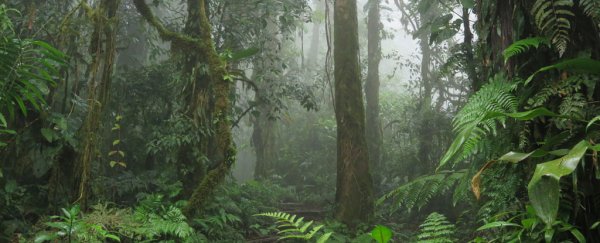The world's first international study of plants estimates that there are 391,000 known unique species of vascular plants – ie. those with conductive tissue that transport water and synthesise foods – but warns that 21 percent of these are currently at danger of becoming extinct.
The report, released by the Royal Botanic Gardens, Kew in the UK, says about 2,000 new plant species are discovered by scientists every year, but while we're continually increasing our records of plants, there's still much we don't know about them and the factors that threaten them around the world.
"This is the first ever global assessment on the state of the world's plants. We already have a 'State of the World's … birds, sea-turtles, forests, cities, mothers, fathers, children, even antibiotics' but not plants," said Kew director of science Kathy Willis. "I find this remarkable given the importance of plants to all of our lives – from food, medicines, clothing, building materials and biofuels, to climate regulation. This report therefore provides the first step in filling this critical knowledge gap."
While climate change is a factor threatening the survival of plant species, the biggest issues at the moment include destruction of habitats for farming, deforestation for timber, and the construction of buildings and infrastructure – with 13 out of 14 of the world's vegetation biomes having seen a loss of more than 10 percent of land in the past decade. Compared to this, climate change alone isn't as much of a problem right now, although the researchers expect that to change in the future.
"I suspect we won't actually see the full impact [of climate change] until 30 years down the line as it takes so long for plants, especially trees, to produce their offspring," Willis told Damian Carrington at The Guardian.
Invasive species of plants are another problem considered in the report, with around 5,000 invasive species around the world threatening native plants and damaging natural ecosystems, with costs estimated at nearly 5 percent of the world economy.
In light of the pressures, the report – which took some 80 scientists more than a year to put together – is intended to become an ongoing, annual assessment of global vegetation, to help researchers, governments, and business leaders plan together for the best conservation strategies.
"We have to be pragmatic," Willis told Lucy Carter at the ABC. "I mean, we've got a growing population size, people need food, they need places to live, so the real thing we need to be doing is identifying which are the important areas to conserve because of the incredible plant diversity they contain, and which areas we should be developing."
So far, 1,771 "important plant areas" around the world have been identified by the researchers, although comparatively few of these have adequate conservation protections in place. In addition to learning more about species in less-developed corners of the globe that have not been so thoroughly researched by biologists, one of the challenges is for scientists to increase their understanding of plants at the genetic level – an area of research still in its infancy.
"[T]here are still large parts of the world where very little is known about plants. Identification of these important plant areas is now critical," said one of the authors of the report, Steve Bachman, in a press release. "Similarly, we still only know a fraction of the genetic diversity of plants, and whole-genome sequences are currently available for just 139 species of vascular plants. Activity in this area needs to speed up."
The State of the World's Plants 2016 report is available online, and Kew's website for the report provides a detailed summary of the findings.
